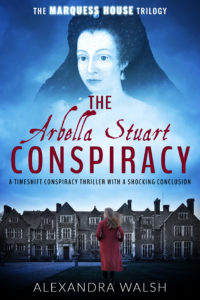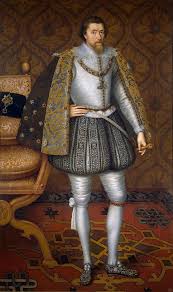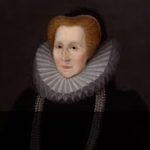Throughout the Marquess House series, I’ve mentioned Arbella Stuart. She has been a shadow flitting across the plot and on Monday 25 May 2020, you’ll be able to read the final instalment of the trilogy and discover more about her in The Arbella Stuart Conspiracy (Sapere Books).
In The Elizabeth Tudor Conspiracy, Arbella appears as a character for the first time. She is a child and her heritage is explained but as a recap here’s where Arbella fits into the Tudor family tree, despite having the surname Stuart.
Her mother was Elizabeth Cavendish, who was the daughter of Bess of Hardwick, whose title was Elizabeth Talbot, Countess of Shrewsbury. Elizabeth was Bess’s daughter from her second marriage to Sir William Cavendish, Treasurer of the King’s Chamber. They had eight children, with two dying in infancy.
By the time Elizabeth Cavendish was of marriageable age Bess had been married twice more, first to William St Loe, then to George Talbot, Earl of Shrewsbury who is most well-known for being host or gaoler, depending on your perspective, to Mary, Queen of Scots. Mary had escaped to England after the death of her husband Henry, Lord Darnley and her subsequent ill-judged marriage or elopement at knife-point – again depending on how you interpret events – to James Hepburn, 4th Earl of Bothwell. This is where things begin to curl around each other and demonstrates the intricacies of these families.
Henry, Lord Darnley was the eldest son of Lady Margaret Douglas. For those who have read it, Margaret was a character in The Catherine Howard Conspiracy. In this book, Margaret was in her early 20s and had recently survived a stint in the Tower of London, thanks to an ill-advised marriage to Thomas Howard, the younger half-brother of Thomas Howard, Duke of Norfolk. When we met her as a companion to Catherine Howard, she was involved with Catherine’s brother, Charles. While it is historically accurate Margaret and Charles were engaged, after his sister’s fall, Charles disappears from the historical records. Whether he died or fled abroad and died there, a stranger in an unknown land in an unmarked grave – history does not tell us. Two years later, in 1544, Margaret married Matthew Stewart, 4th Earl of Lennox.
Margaret Douglas was a Tudor princess in all but name, being the daughter of Henry VIII’s elder sister, Margaret Tudor and her second husband, Archibald Douglas, 6th Earl of Angus. With Matthew Stewart, Margaret had two sons who lived to adulthood: Henry Stuart, Lord Darnley who married Mary, Queen of Scots and Charles Stuart, 1st Earl of Lennox who married Elizabeth Cavendish and they had a daughter, Arbella Stuart. Charles, who never enjoyed the most robust health, died while Arbella was a baby. His mother, Margaret Douglas died in 1578 when Arbella was three and, her mother, Elizabeth died when Arbella was seven. After this, she was brought up by her grandmother, Bess of Hardwick.
It was through Margaret Douglas that Arbella had a claim to thethrone of England and Bess raised her in the manner befitting a princess of the blood royal. Many thought Arbella should have succeeded Elizabeth I but her rise to the throne was never to be and instead, her cousin, James VI of Scotland inherited the crown to become James I of England. Arbella was side-lined until she eloped and made a disastrous marriage to William Seymour, 2nd Duke of Somerset. Through his grandmother, Lady Katherine Grey, who was herself a granddaughter of Henry VIII’s younger sister, Mary, Seymour also had a blood claim to the throne. With their joint blood link, if Arbella had delivered a living son, King James would have been in trouble. To try and prevent this possibility, James had Arbella and William imprisoned in the Tower of London for treason.
However, Arbella still had loyal friends who tried to help them escape. Disguised as a page, she fled the Tower, the plan being to meet her husband further down the river where they would escape to France. However, things went awry and while Seymour escaped, Arbella’s ship was apprehended by the Royal Navy not far from the French coast and she was returned to the Tower. She remained here until her death where in 1615.
I first discovered Arbella when I read Sarah Gristwood’s brilliant biography: Arbella – England’s Lost Queen (Bantam Books) in the early 2000s.  Before this, I had never heard of her and this unexpected possibility that she could have followed Elizabeth on to the throne intrigued me. If this had been the case, then the Tudor legacy would have been a quartet of female monarchs: Lady Jane Grey, Mary I, Elizabeth I and then Arbella, which is perhaps what worked against her and was the reason the Privy Council was so keen to invite a man to take the crown.
Before this, I had never heard of her and this unexpected possibility that she could have followed Elizabeth on to the throne intrigued me. If this had been the case, then the Tudor legacy would have been a quartet of female monarchs: Lady Jane Grey, Mary I, Elizabeth I and then Arbella, which is perhaps what worked against her and was the reason the Privy Council was so keen to invite a man to take the crown.
When a woman is monarch, it is other women who are close to her, men cannot assume the intimate roles that make them indispensable to a ruler, they always have to work through an intermediary. To have another unspecified amount of time with a woman holding power would have been anathema to the senior men in the court.
They were eager to have a man at the helm, so they could get the boys’ club going again with favours, jobs and land exchanges being made with a king. As James VI had a claim through both his mother, Mary, Queen of Scots, who was a granddaughter of Margaret Tudor from her marriage to her first husband, James IV, and his father, Henry Stuart, Lord Darnley, who was the eldest son of Margaret Douglas, the daughter of Margaret Tudor from her second marriage. He was seen as the stronger claimant and on Elizabeth’s death, he was declared king.
However, he may not have been Elizabeth’s choice. There is a tale suggesting that on her death bed when her Privy Councillors were asking her to name her successor, she supposedly made the shape of a crown above her head when James was named. In his book, Elizabeth – The Forgotten Years (pgs. 380-3), historian John Guy, suggests that while Elizabeth may have touched her head, she could simply have been touching her head and this detailed story of her supposed choice of monarch, were even in 1603, described as ‘false lies’. Elizabeth had left no written proclamation of her successor and in order to bolster the claim of the Scottish king, there were many versions of the supposed written testimonies of what happened at the Queen’s bedside, including one tale of her making an eloquent speech naming James but as she had been unable to speak for several days prior to this, it seems unlikely.
In which ever manner the Privy Council managed this coup, they were successful and James became king of England, while his cousin, Arbella was shunted into obscurity. For years, history was not kind to Arbella Stuart. She was painted as troublesome, difficult, argumentative and grasping, as well as potentially, mad. It has been suggested she suffered from the illness porphyria, a condition that has been variously prescribed to her relatives: Margaret Tudor, Mary, Queen of Scots and George III. She certainly seemed to have some form of condition but no conclusive evidence has ever proved a diagnosis.
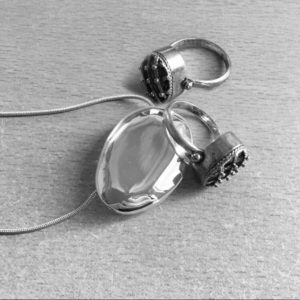 Arbella, like her equally as defamed grandmother Bess, knew her worth and was prepared to fight for what she believed was rightfully hers – the throne of England. In doing this, she created enemies and, as with most powerful women of the time, earned a reputation for being a tyrant. However, from the extensive research I did on Arbella, the underlying sense that came across to me was a woman who was aware of her place in society but who, because of her gender, was thwarted at every turn. Had she been born a man, it’s possible she would have been given the crown, instead, she had to watch her cousin take the life she felt should have been hers.
Arbella, like her equally as defamed grandmother Bess, knew her worth and was prepared to fight for what she believed was rightfully hers – the throne of England. In doing this, she created enemies and, as with most powerful women of the time, earned a reputation for being a tyrant. However, from the extensive research I did on Arbella, the underlying sense that came across to me was a woman who was aware of her place in society but who, because of her gender, was thwarted at every turn. Had she been born a man, it’s possible she would have been given the crown, instead, she had to watch her cousin take the life she felt should have been hers.
No doubt she was often frustrated, who wouldn’t be? Yet, when reading her correspondence and taking into account the number of plots and schemes into which she threw herself, there was always a large and loyal entourage around Arbella. While some people remain loyal for their own personal gain, these are usually in the minority. Most supporters are their because they care about and, often, admire the person.
Many letters show Arbella’s caring nature, she wrote to friends and family prolifically, although many of her early letters have vanished. Friends helped her again and again and there were many sonnets, books, poems and ballads dedicated to her. Someone who can inspire such loyalty must have had a softer, more caring side, although this is rarely discussed.
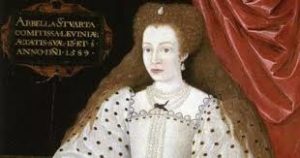
In The Arbella Stuart Conspiracy, I have stuck to the facts where I can but there is a certain amount of re-imagining in Arbella’s story. She was a warrior princess who fought for her rights, only to die a prisoner in the Tower of London. She was strong, feisty, fearless and determined. I hope she would have enjoyed the alternate journey I have sent her on.
The Arbella Stuart Conspiracy published on 25 May 2020 by Sapere Books.
The Marquess House Trilogy
Part One: The Catherine Howard Conspiracy
Part Two: The Elizabeth Tudor Conspiracy
Part Three: The Arbella Stuart Conspiracy

